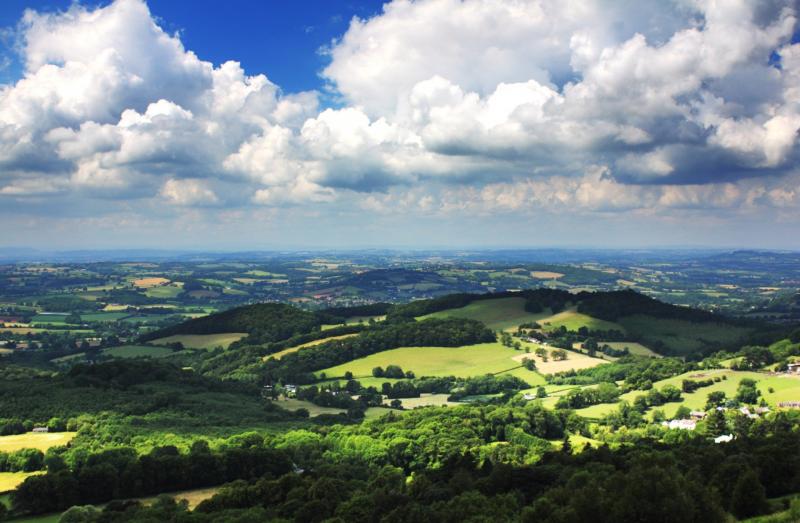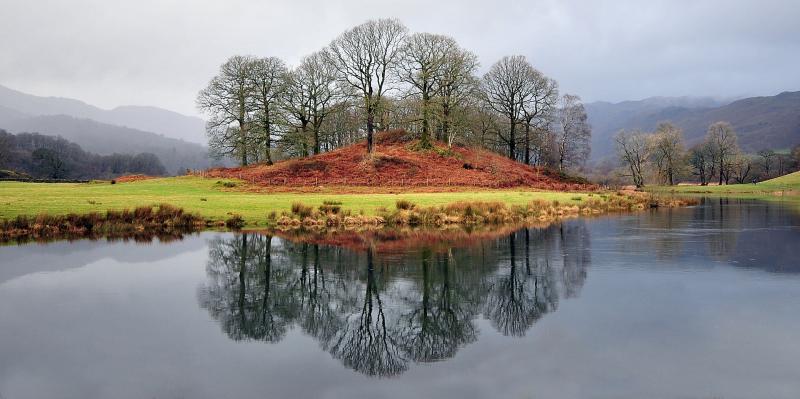Mary Stevens03 Apr 2020
Imagine you are given a 1000 piece jigsaw. You know roughly what it should look like when it's done. Approximately a quarter of it should be trees. But all the pieces are varying shades of the same colour. Some of them are missing. And there’s no image to copy. Where do you start?
Where to find land for trees
Many people recognise the importance of trees as a natural solution to climate change in drawing down carbon emissions. For campaigners looking to find land for trees in and around our towns and cities the jigsaw puzzle is a good analogy for the situation they face. There are some great maps out there showing where the trees need to go, from the global to the local. And we’ve made our own high-level assessment. But it’s still hard to know where to start. It’s a big step from maps of woodland potential to potential action.
So at Friends of the Earth we've been looking at a portfolio of options, championing the ideas of others and coming up with our own prototypes.
This post covers some of the possible solutions we’ve identified, what we’ve learned in the process and what we’d like to try next. Whether you're active in your community or local authority, own land or you want to invest in natural climate solutions, we hope you find it useful.
Supporting communities with the tools to inform decisions
Empowering community activists with the information and data they need to identify priorities and move quickly to action is at the heart of our work at Friends of the Earth. Using our postcode look-up tool anyone can quickly find out what the issues and opportunities in their neighbourhood are. The tree-cover data remains very high-level. So what are the tools and methodologies that might drive a better conversation about finding the land for trees?
For communities
Local maps for local conversations
In the green belt south of Bristol we’ve been working with satellite mapping specialists Terra Sulis to develop catchment- and parish-level maps that identify current and potential land for trees. Despite 82% of the area being classified as "good to excellent" agricultural land, initial analysis suggests there's scope to double or even triple the existing level of tree cover without encroaching on arable or good quality pastureland. The mapping method includes identifying areas on steep slopes, typically where remaining patches of ancient woodland exist and where new trees could expand the spread of woods. This suggests that doubling or even tripling tree cover might in fact be a return to a fairly recent landscape, rather than a radical new direction.
Terra Sulis has also looked at the potential to use trees to sequester carbon, which will be important to the many local councils exploring how to respond to the climate emergency. The next step is to support local parish councillors to work with landowners and decision-makers in their immediate areas.
Seeing is believing
In addition to using maps to identify where trees can be planted, we've asked ourselves whether increasing the visibility of suitable land might create the pressure that’s needed at local level. It can be hard for people to imagine in practice how the place where they live could be transformed by more space for nature. And if we can’t imagine it, we won’t demand it. Which led us to the concept of hope spots.
Hope spots – a city-wide vision to inspire
The hope spots are more of a provocation than a detailed map, although they will be firmly grounded in the data. The idea is that by identifying a small number of priority locations for tree planting and nature recovery around a city – based on the intersection of environmental and social data (where is the human need for nature greatest?) and backed by creative visualisations of what the sites could become – we'll be able to create a groundswell of demand for land-use change in these areas that will focus the attention of planners and land managers.
Campaigners and communities will be able to hold decision-makers to account for the progress they are making in regenerating the hope spots – and ultimately get involved on the ground. This idea is particularly exciting since it also engages the collective imagination. If the climate crisis is in part a failure to conceive of a better future then solutions that help bring these alternative futures to life are key.
For local authorities and their partners
The hope spots concept has the potential to work for local authorities too, especially if they need a strong vision for others to get behind. But at the same time a more comprehensive tool may be required. In Oxfordshire, where there is fierce competition for land for agriculture and development, Oxfordshire Trees for the Future and Oxford Friends of the Earth are looking to develop a Tree Opportunity Map to "give one single picture that all stakeholders with an interest in land use can agree upon." The difference from the Terra Sulis mapping is that it's more comprehensive. Once complete it has the potential to become an agreed plan, rather than a tool to inform one. Campaigners estimate that around 50% of the land in Oxfordshire could be impacted by the goal of doubling tree cover (even if just through wider hedgerows in some areas) so a plan that everyone can unite around could be very valuable.
For corporate landowners
Increasing the visibility of the opportunity is a theme that runs through all these initiatives – and it applies to the landowners themselves, as well as those who seek to influence them.
WaterUK partnership
Through a partnership with WaterUK, we’ve kicked off a project to support all of England’s water companies to better understand the collective potential of their land for tree growing. They're already committed to planting 11million trees by 2030 but there is a clear need for a collaborative methodology to identify the most suitable distribution and whether the sector does in fact have enough suitable land to plant more. If you're interested in this area of work, please contact Trees Campaigner Guy Shrubsole, [email protected].
Vana project
We’ve also been supporting the Vana Project , which aims to help corporate landowners to understand the tree-cover potential of the land in their investment portfolios. Despite reputational and brand benefits, a big challenge is the lack of sufficient incentives for companies to make a change when they are already receiving a return from tenant farmers or they are "banking" the land for its development potential (which could be undermined by planting trees on it). Vana is actively seeking a pilot partner, so get in touch if you can help.
What we’ve learned so far
The importance of visualisation
Finding the land for trees requires a leap of the imagination. It can be hard for people to visualise how creating more space for nature could transform their area. People are less likely to press for changes to their neighbourhoods without being able to ‘see’ what they could look like. This is particularly true of land around cities (i.e. in the green belt) which we argue needs to be prioritised and which is already invisible to many. Mapping tools can help with this – but they need to be accompanied by a bigger creative vision. Our hope spots work addresses this, but other insights help too like the finding that doubling tree cover may in fact represent a restoration of previously existing landscapes. The recent use of visualisation tools for Anne Hidalgo’s vision for Paris is another good example.
There is enough land
There is more than enough land – although there will be trade-offs. Changes will be felt most on low grade pasture-land, so encouraging farmers to pursue agro-forestry approaches will help here.
These tools are prompts
The tools are prompts, but they are not the answer. One thing we rightly hear in community testing is a concern about putting the right tree in the right place, or the impact trees could have on other habitats. Not all the land where there's potential for trees will be appropriate, for habitat or other important aesthetic or cultural reasons. There may be merit in not making the maps too good, so that they're not seen as definitive or prescriptive, but rather using them as prompts for better-informed and more ambitious local conversations.
Need different stories to engage young people
There are sceptics – and not the ones we expected. Despite their benefits there are always arguments against trees, particularly in cities. But one thing that surprised us has been the reticence of some young people to embrace natural climate solutions. Their concerns are driven by a commitment to justice – and listening to them has been hugely instructive. They see tree-planting measures as greenwash, distracting attention from the urgent need to cut emissions right now. There is also a risk of an urban elite offloading the impact of its consumption in the countryside (much as carbon offsetting can operate like this at a global level) and driving up land and therefore house prices further.
We argue that these issues are not about nature and land use, but about patterns of land ownership. But those of us campaigning for nature clearly need to tell a much stronger story about how reclaiming space for trees and nature should also be part of ensuring access and safeguarding all our futures.
What next
We'll continue to support local communities to test our tools at local level. If you're interested in finding out about whether any of these ideas could work in your area please do get in touch and we can share our approach in more detail. Ultimately, we’d love to make it easier for people everywhere to understand where they can find the land for trees in their area, perhaps building on our postcode look-up tool.
We’ll also be ensuring that our learning helps inform our response to the government’s plans in the forthcoming English Trees Strategy. We are aiming to launch the hope spots concept in Bristol with our partners at Avon Wildlife Trust but we need more financial support to develop the prototype and launch a trial campaign. If this captures your imagination and you can support either financially, or you're a creative who could collaborate on great visuals, we’d love to hear from you.
Finally, we’re also going to be continuing our work with young people to explore further how we can make nature-based climate solutions a compelling solution for the next generation of activists.
If you're interested in learning more about this work on visualisation and community tools, please do contact us.
.




